
From the centre of the Spanish capital to the surrounding area, the A-6 is one of the most important roads in the country. Although it is known as the road to La Coruña, it does not really end there, but in Arteixo, a few kilometres from the city of La Coruña. It is a route with many tourist attractions. As it passes through Castile, León, El Bierzo and Galicia, the variety of landscapes and cuisine is enormous. Discover the great landmarks that deserve a stop on the Autovía del Noroeste.
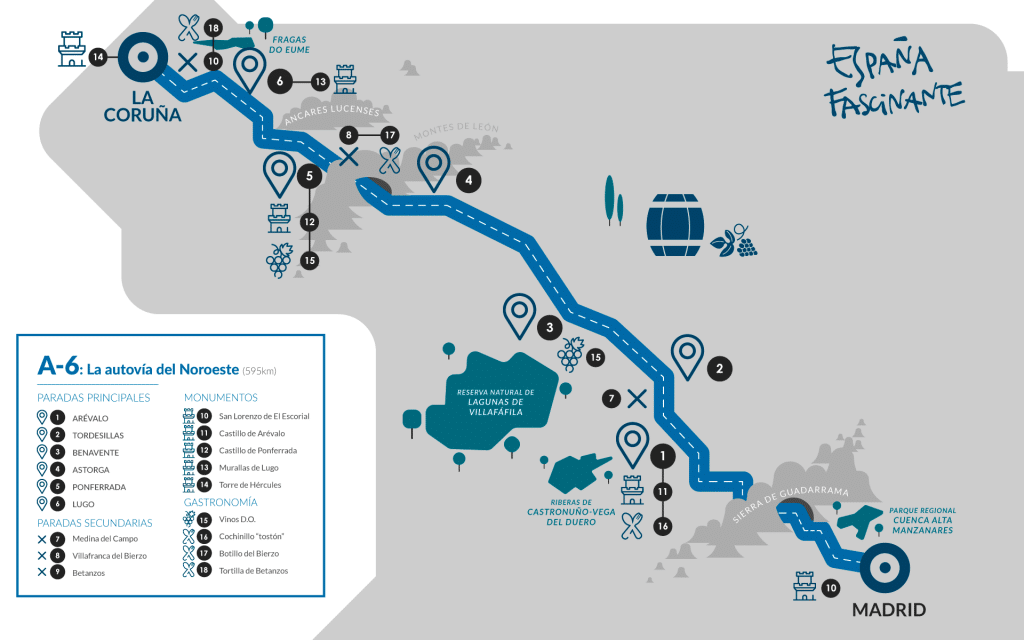
Kilometres 54, 360 and 430
One of the big differences between the radial motorways and the old national ones is that they save the mountain passes in a much more efficient way. Since the A-6 passes through some of the best known mountain ranges in Spain, this advantage is key to it.
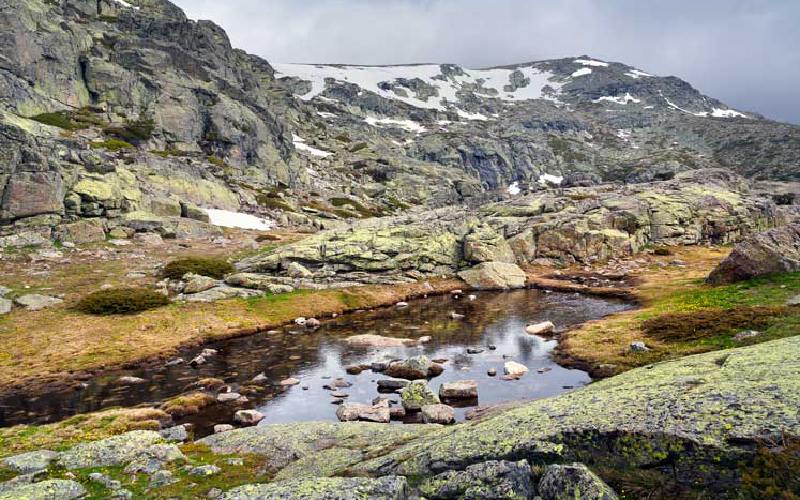
Sierra de Guadarrama is the first to face the A-6. It passes by the village which gives its name to the road, on the section of the road that is paid for. The tunnels that cross the massif were a revolution at the time. The first one dates from 1963 and was a great work of engineering. In fact, it was the first national toll concession. Its modern systems and amplitude were its signs of identity. Nine years later another one was opened and in 2007. From then until 2009 the old ones were reformed. Below is an explanation of the variant that avoids the toll and the places where it goes up and down to the Alto del León.
Much further on, the Montes de León await. Through the Manzanal pass, the Maragatería is connected to El Bierzo. During the 60 kilometres that separate Astorga from Ponferrada you can see the transition that the ascent and descent of this mountain range implies. If there is no snow or ice, a very nice alternative is the LE-142. This passes through beautiful villages such as Rabanal del Camino, El Acebo and Molinaseca. However, it means an increase of half an hour in the trip.
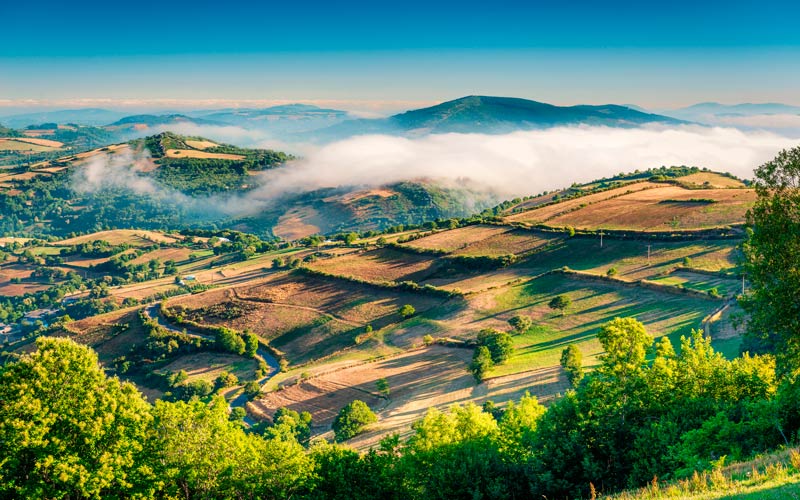
Los Ancares.
A little further on is the transition between Galicia and León, which is made by Los Ancares. In this case the Cebreiro is surpassed by Piedrafita. Both the Galician and Leonese sides of the massif are spectacular, especially in autumn. From this village, it is only 5 minutes to O’Cebreiro, a Jacobean place par excellence that stands out for its ancient architecture.
Kilometres 50, 185, 235 and 554
There are also spectacular natural areas associated with rivers along the A-6. The first is in Madrid, the Regional Park of the Cuenca Alta del Manzanares. From Collado Villalba, before the toll, it is barely 20 minutes to Manzanares El Real. La Pedriza or the Santillana reservoir are just a stone’s throw away, although it takes a whole day to enjoy them.

Santillana Reservoir, very close to the A-6. | Shutterstock
At the height of Tordesillas is the Natural Reserve of the Riberas de Castronuño. These plains around the Duero River are home to a multitude of birds and interesting vegetation about 25 minutes from the town of Valladolid. The Natural Reserve of Las Lagunas de Villafáfila is also perfect for ornithology. It can be reached by driving a quarter of an hour from Villalpando along the ZA-715.
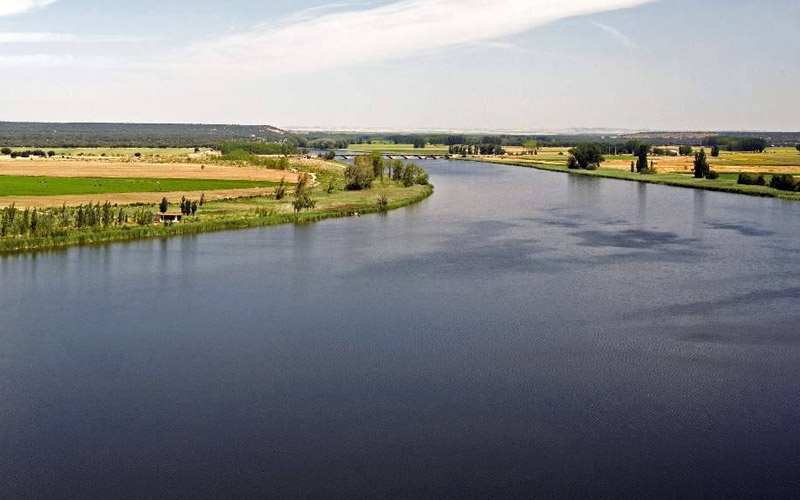
Castronuño banks. | Turismo Castilla y León
Finally, almost in A Coruña, the Fragas do Eume grows around this river. Although they are a little more than half an hour from Betanzos, being at the end of the route they can be a perfect destination to spend the night there or in A Coruña. Their great exuberance and the relief of the place combine to create a site of great beauty, which includes waterfalls such as Vilagocende.
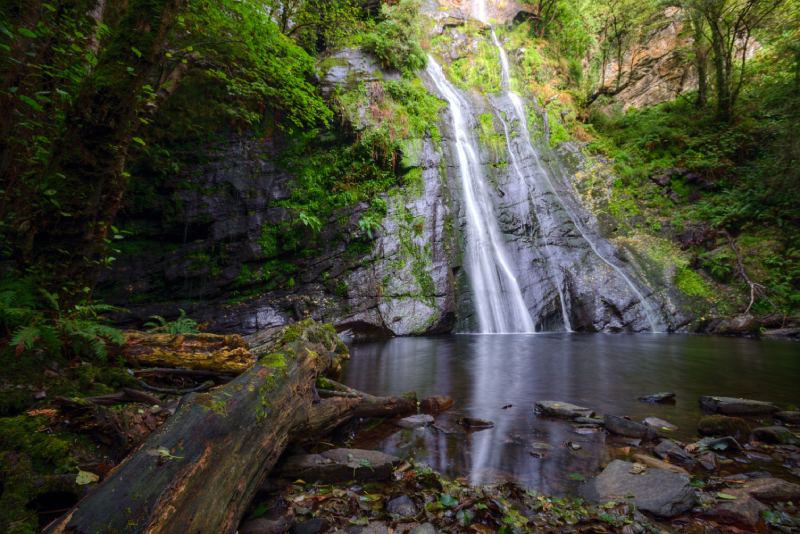
Vilagocende Waterfall. | Shutterstock
Kilometres 40 to 108
Although the AP-6 runs from Collado Villalba to Adanero. The section between the capital and the beginning of the payment area formed the first pass of the Autovía del Noroeste. It was at the end of the 1960s and connected to the N-VI, its predecessor. However, it is from Guadarrama that it is charged. Therefore, if you leave Madrid you can get to exit 52 without leaving the A-6. In this way you would be able to ascend the Alto del León. On the way you pass by the Tablada sanatorium, a ghostly abandoned building where tuberculosis patients were treated.
Then, you will pass through San Rafael, Navas de San Antonio or Villacastín. On this side of the Sierra de Guadarrama there are interesting temples and the possibility of stopping to rest. The course of the journey is along the N-VI. Although in theory it only increases the time by a quarter of an hour and the mileage is similar, it is much more uncomfortable than the motorway. In case it is winter, it is not recommended at all. It is also often busy at peak times or at times of holiday demand. If you are coming from the north, you should take the exit to the national road before Adanero itself.
Kilometres 10 to 45
With very short detours you can reach two extraordinary places: the Monastery of San Lorenzo de El Escorial and the Palacio del Pardo. In the case of the first one, it is the work for the posterity of Philip II. It is the greatest exponent of the Herrerian style and its attractions include basilicas, paintings, gardens and even one of the most beautiful schools in Spain. As told below, the town where it is located has great places to eat. Not far away you can access the controversial Valle de los Caídos, a remarkable architectural work despite its dark past.

Monastery of San Lorenzo de El Escorial. | Shutterstock
Meanwhile, the Royal Palace of El Pardo is an old complex whose use dates back to the Habsburg era. However, it was the Bourbons who gave it its current appearance. Usually the home of foreign leaders, it has first class pictorial works of art, such as the Portrait of Isabella the Catholic by Juan de Flandes. The nearby reservoir and the Manzanares provide an interesting natural addition.
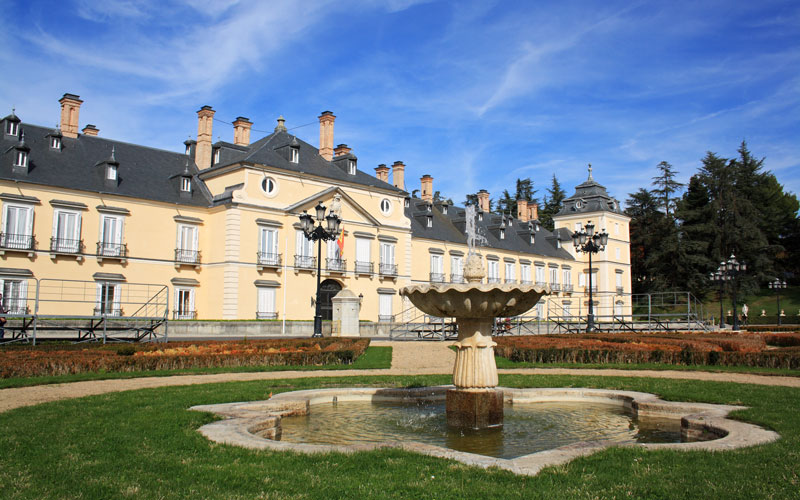
El Pardo, next to the A-6. | Shutterstock
Kilometres 123 to 180
Both Arévalo and Tordesillas and Medina del Campo were places of great importance to the crown of Castile. Especially associated with the Catholic Monarchs, above all with Isabella, they have castles, temples and squares that are certainly worth a visit. Sixty kilometres, between pk. 123 and 184, in which to delve into the history of the kingdom.

Arévalo Castle.
The first village you reach is Arévalo, still in Ávila. The enclave where Isabella the Catholic spent part of her childhood, born in the nearby Madrigal de las Altas Torres, shines with a great deal of Castilian Mudejar to be seen. This style is present in the castle or the churches of Santo Domingo de Silos, Santa María la Mayor, San Miguel, San Martín or El Salvador. Various remains of the wall remain. Embedded in it is the curious temple of San Juan Bautista.
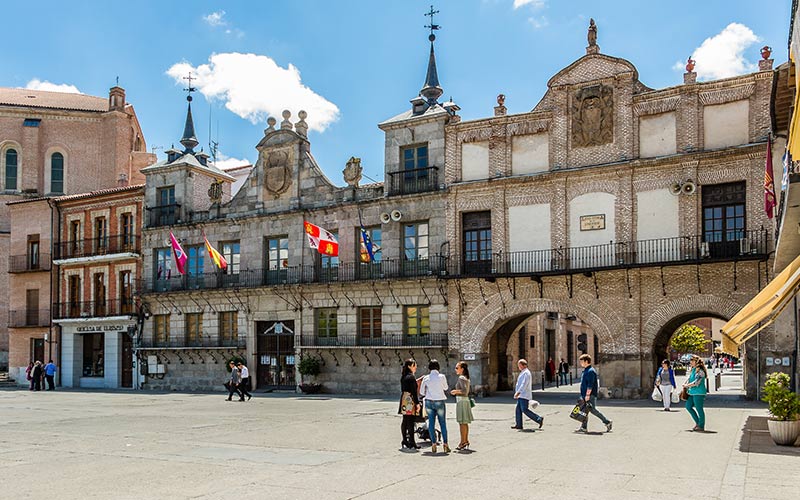
Medina del Campo Town Hall.
If Arevalo is related to Isabella the Catholic’s childhood, Medina del Campo is related to her old age. It was here, in Valladolid, that the monarch died and made her will. The place chosen was the Testamentary Palace, the importance of which was due to the reform carried out by Ferdinand II of Aragon. The beautiful collegiate church of San Antolín and the magnificent castle of La Mota are other elements not to be overlooked.
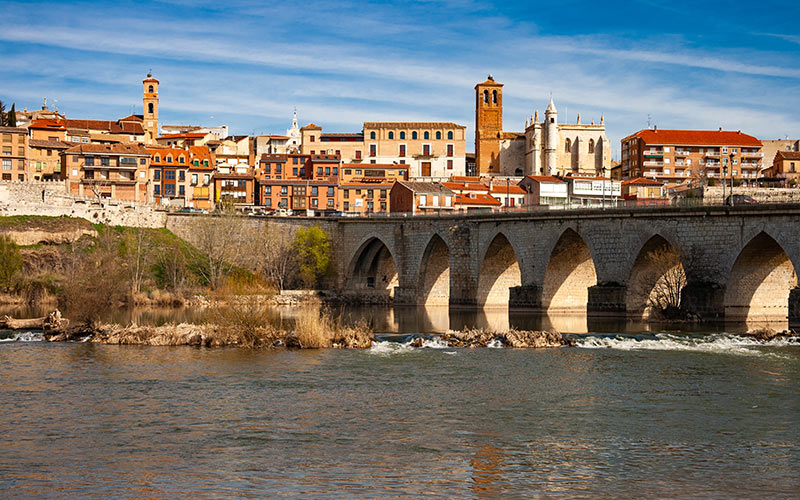
Tordesillas.
Finally there is Tordesillas. It was there that the Catholic Monarchs signed the pact with Portugal in which the world was divided. It should be remembered that the Portuguese had exclusive rights over Africa and a large part of the East. Both they and their grandchildren would seek alternative routes to the spice islands with expeditions such as that of Elcano and Magallanes. Be that as it may, the historical pact centres much of what to see on the site. In addition, the Plaza Mayor and the Royal Monastery of Santa Clara are of great interest.
Kilometres 260 and 382
If the castles in the Castilian area of the A-6 were impressive, those in the Leonese area are not far behind. There are two great fortresses to stop at, different but complementary. The first is Benavente, on pk. 261 approximately. Hita in the province of Zamora, the city serves as a transition between Tierra de Campos and Los Valles. From the former, you pass through Villalpando shortly before and very close to Villanueva del Campo. From the second, Camarzana de Tera and Santa Cristina de la Polvorosa are a stone’s throw away.

La Mota castle. | Shutterstock
Its Caracol tower, today a Parador, was part of the Mota de Benavente castle. A work of the Pimentel family, it was built at the beginning of the 14th century. At the time it was executed it mixed gothic and renaissance features. In other times it had extensive gardens and a large built body. Its Moorish coffered ceilings are among the most outstanding in the region. However, the French razed the fortress to the ground in the War of Independence.
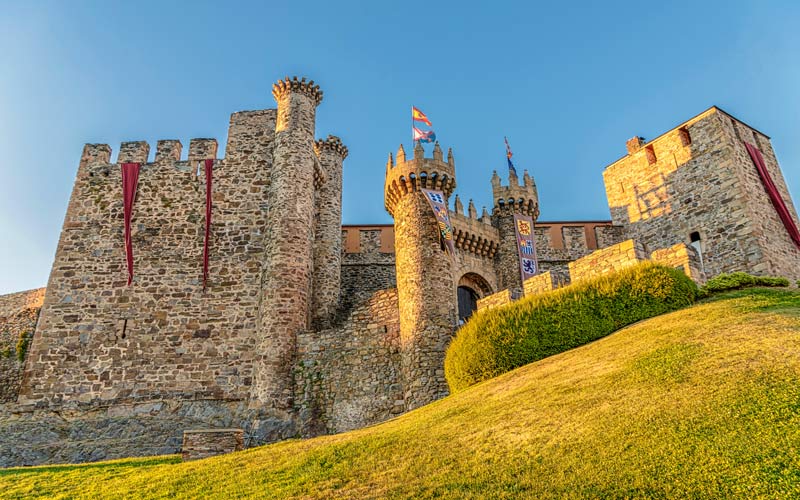
Ponferrada Castle.
Continuing on to the province of León, past the mountains to which it gives its name, Ponferrada is another impressive stop. The current capital of El Bierzo has a spectacular Templar castle. Thanks to it, it is a key point on any route that follows the path of these knights. With a long history, it continued to expand once the order was dissolved. In the city, the basilica of the Virgin of La Encina, supposedly found by a man of the Order of the Temple, is also noteworthy.
Kilometres 322 and 490
There are several Roman remains on the A-6. For example, fifteen minutes from Arévalo it is situated in the archaeological site of the villa of Puras. To take the A-6 all you have to do is go to Olmedo, a beautiful village, and from there turn off to Medina del Campo.
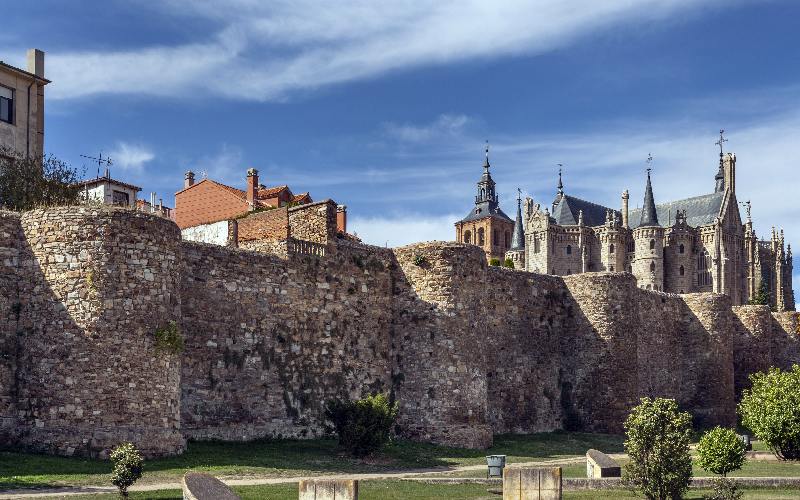
Roman walls of Astorga with the cathedral and the episcopal palace in the background. | Shutterstock
However, the most notable are ahead. Astorga is waiting in the maragatería. It is one of the most interesting places in the whole Autovía del Noroeste. Amen to possessing a beautiful cathedral and an episcopal palace, work of Gaudí, it was the end of the Silver Way. This gave it great importance in Roman times. It was founded with people from the now disappeared city of Petavonium (Santibáñez de Vidriales). Its walls are the most characteristic element of this past era. The museum of the Ergastula is also very important.
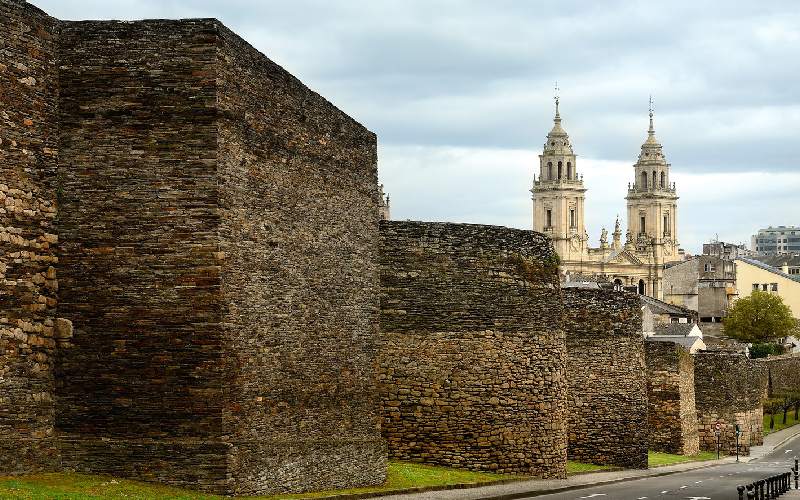
Roman Walls of Lugo
Meanwhile, Lugo is located beyond Los Ancares, on pk. 490. Its Roman defensive bastions are among the best preserved in the world. This has made it a World Heritage Site. In addition to its origin, it shares with Astorga the spirit of St. James, as we will see in the last section. It has many other remains from the period and a beautiful cathedral. It is worth mentioning quickly La Coruña, the final point of the route, with the Lighthouse of Hercules and many other vestiges of Rome.
Along the whole route
The A-6 crosses important routes that have been used since before the Romans conquered Hispania. Medieval routes centred on Astorga and Santiago de Compostela which also served as passes for reapers and muleteers. Because of this, there are many interesting and historical points to stop at. Some have already been mentioned above, but others have not.
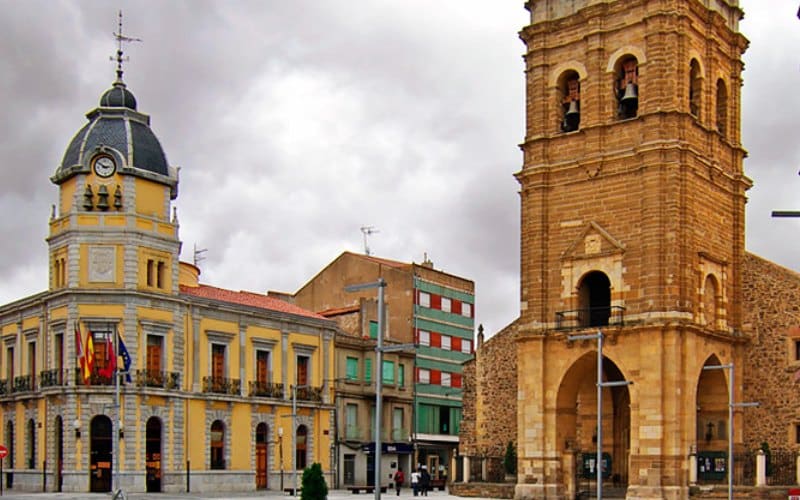
La Bañeza.
The final section of Vía de la Plata is shared with the A-6. In fact, the branch of the highway that goes down to Merida, the A-66 inherited the name. This route, which connected the north and south of the Hispanic west from the Celtiberian era, links up with the La Coruña road in Benavente. It then continues through La Bañeza, a beautiful commercial village, and ends in Astorga. The geography has meant that the path has remained almost unchanged for centuries and is still travelled on foot by pilgrims on the Way to Santiago who come from the Levante or Andalusia.
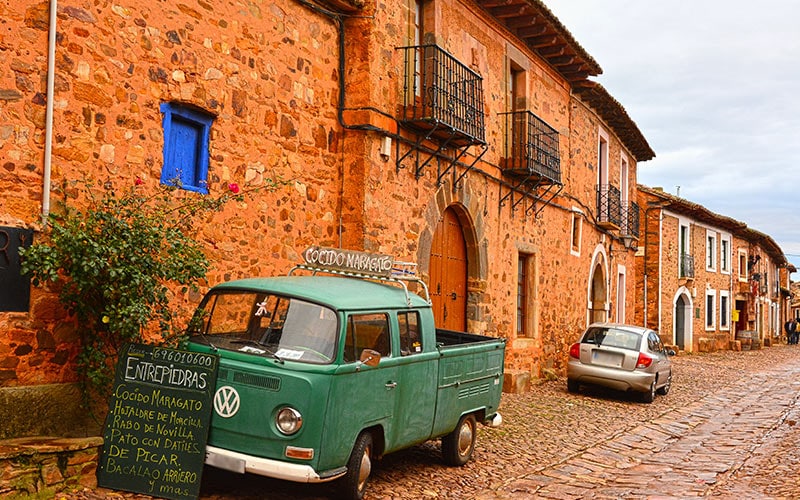
Castrillo de los Polvazares. | Shutterstock
Since it goes to Arteixo/A Coruña, the A-6 has many intersections with the Way to Santiago and even shared sections. One of them is the aforementioned Vía de la Plata. In Astorga it connects with the French Way, to which it runs parallel. Very close to the capital Maragata is Castrillo de Polvazares, a Jacobean village and one of the most beautiful in Spain.
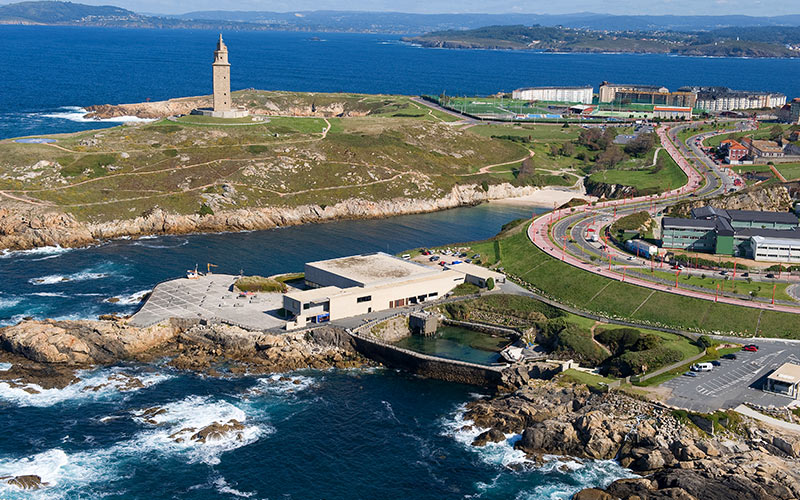
Lighthouse of Hércules. | Shutterstock
The Autovía del Noroeste connects again with the French Way in Ponferrada and accompanies it until it overcomes the Cebreiro. It passes through the spectacular Villafranca del Bierzo or Cacabelos. You can also make stops in villages as charming as Vega de Valcarce or Las Herrerías. Then the road continues north to Lugo, a key point in the Primitive Way. Further on, in Baamonde, it crosses with the pilgrims of the Northern Way. Finally, in Betanzos and A Coruña it is the turn of the English Way, which can even be started in the latter.
